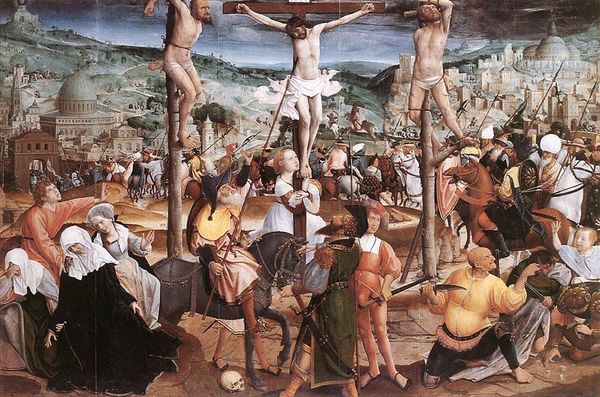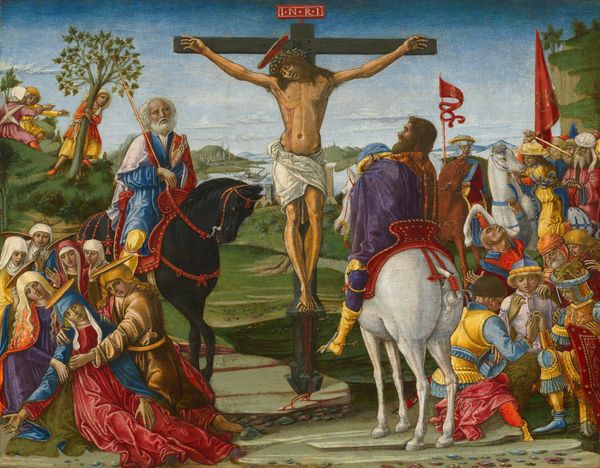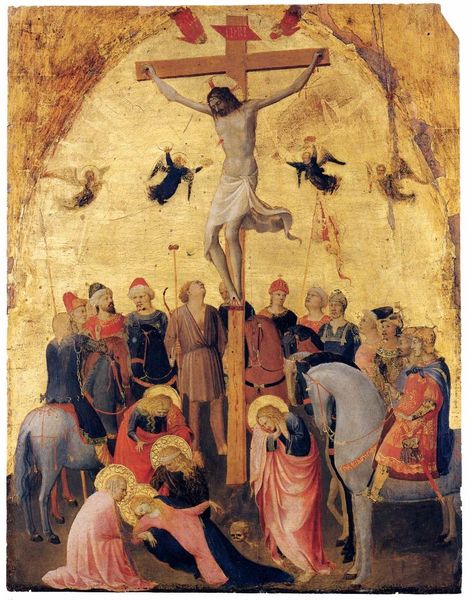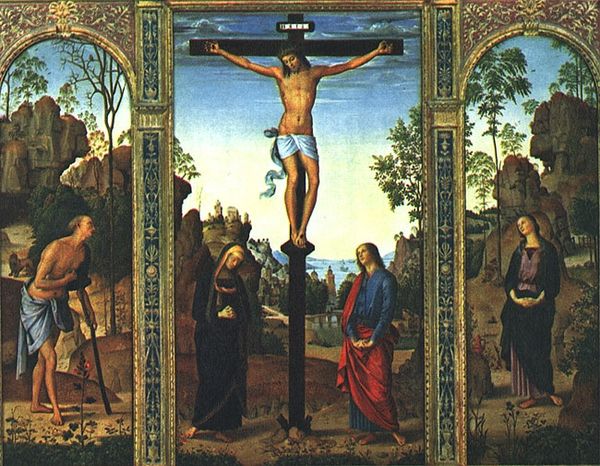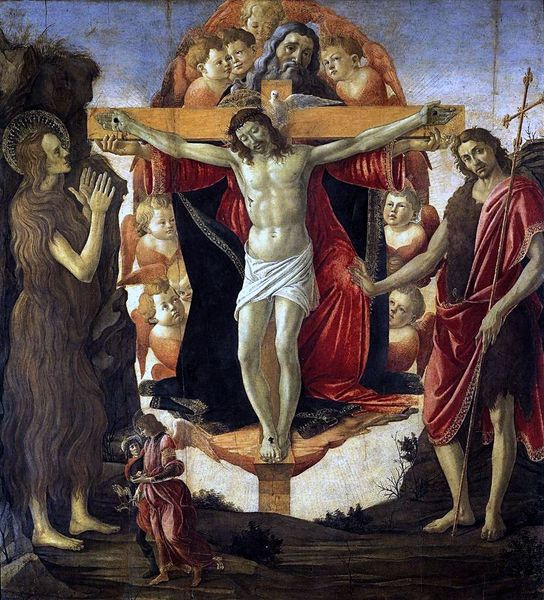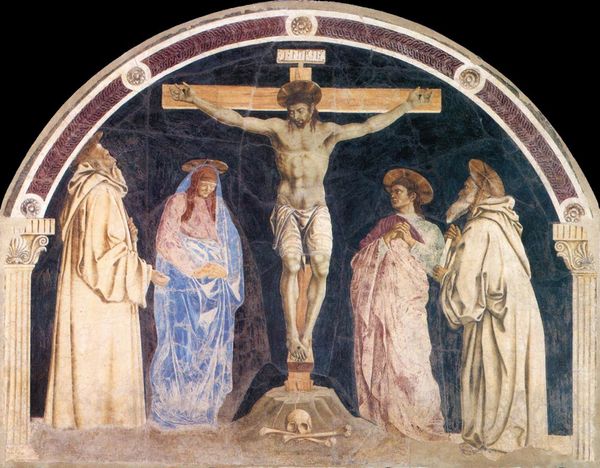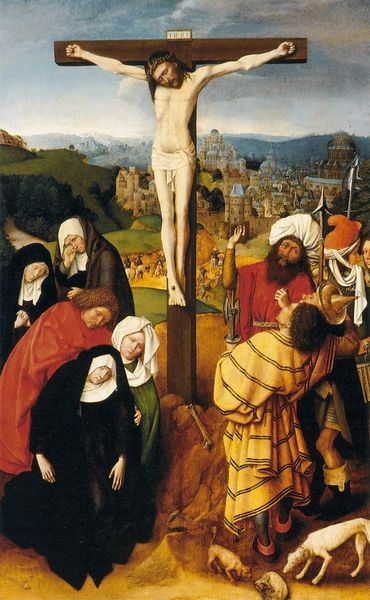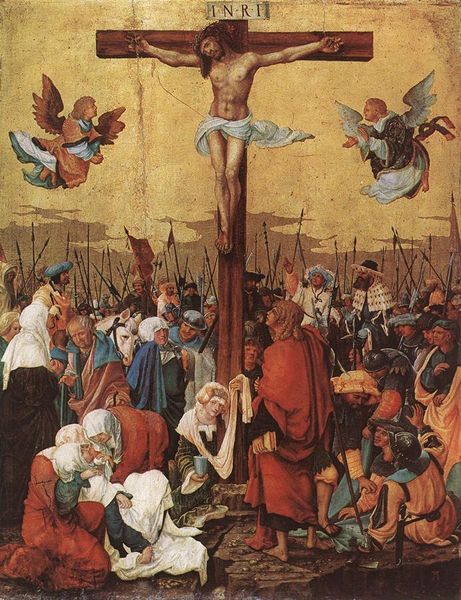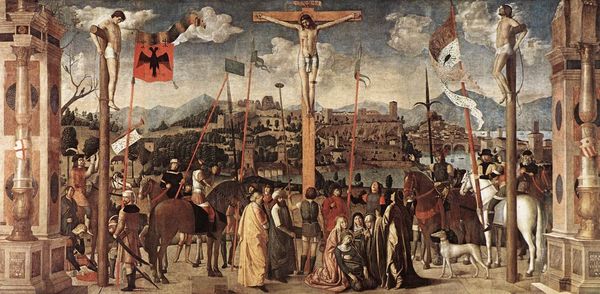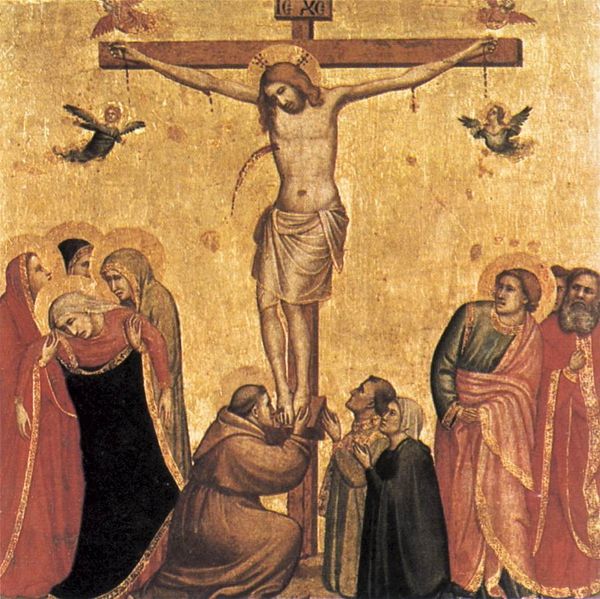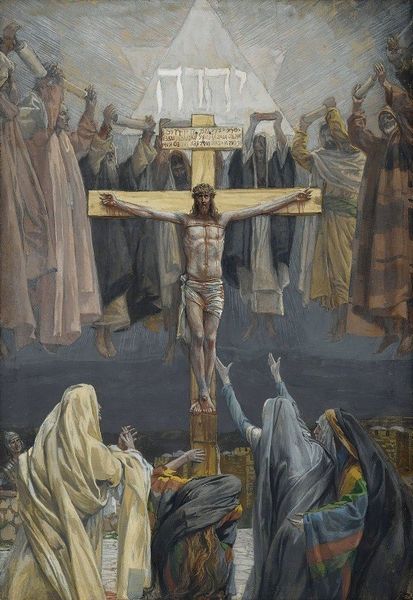
painting, oil-paint
#
narrative-art
#
painting
#
oil-paint
#
figuration
#
oil painting
#
jesus-christ
#
christianity
#
crucifixion
#
genre-painting
#
history-painting
#
italian-renaissance
#
early-renaissance
#
christ
Copyright: Public domain
Curator: Before us hangs Jacopo Bellini’s “The Crucifixion,” an oil painting residing here in the Galleria dell'Accademia in Venice. The date of creation, unfortunately, remains uncertain. Editor: It hits you, doesn’t it? Like a muted chord, solemn but stirring. All those figures gathered… it feels less like a painting and more like overhearing a hushed conversation in history. Curator: It’s quite indicative of the Early Renaissance style, focusing on narrative clarity. Notice how the composition draws our eye directly to Christ on the cross, the central figure in a tableau rich with socio-political meaning during that era. Editor: See how Bellini hasn't shied away from painting emotion on their faces, almost theatrical, which, dare I say, adds an element of drama? The red banners and soldiers' spears in the backdrop seem to heighten the tension—you almost expect to hear the clash of metal and feel the crowd’s uneasy stirrings. Curator: Indeed. “The Crucifixion” provided a very public visual reinforcement of religious doctrine but also a contemplation of power structures within the Venetian Republic itself. The depiction of Roman soldiers and various spectators served to create an immediate point of reference for viewers. Editor: Though a lot has changed in Venice, staring at this painting evokes a deep connection to our humanness – joy and tragedy and the echo of tales that have shaped society. Curator: Ultimately, a painting like this asks us to consider how we are implicated, then and now, in structures of faith and power. Editor: It definitely sets a stage. I mean, where do you position yourself among all these faces from then till now?
Comments
No comments
Be the first to comment and join the conversation on the ultimate creative platform.
